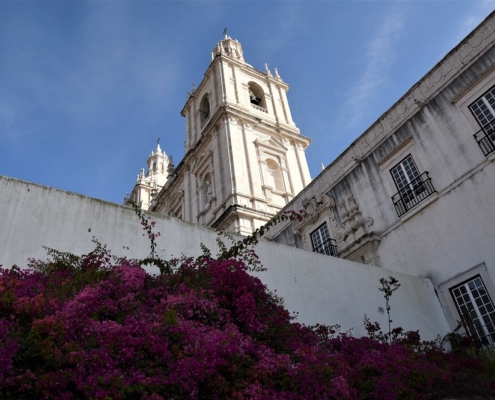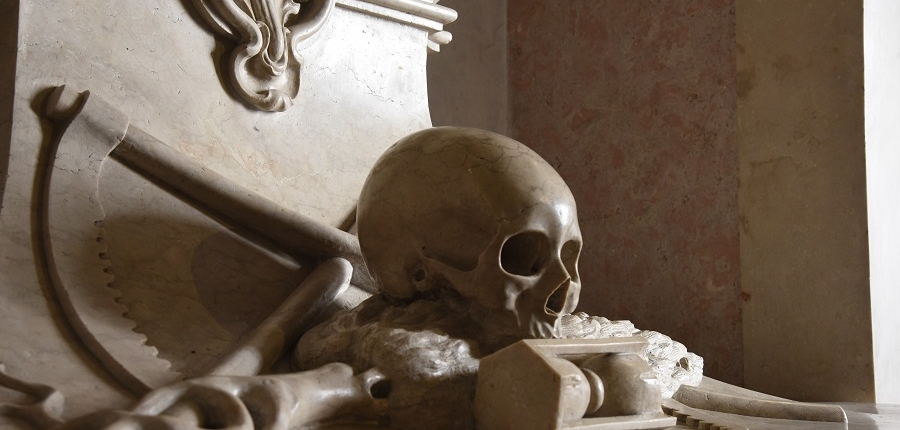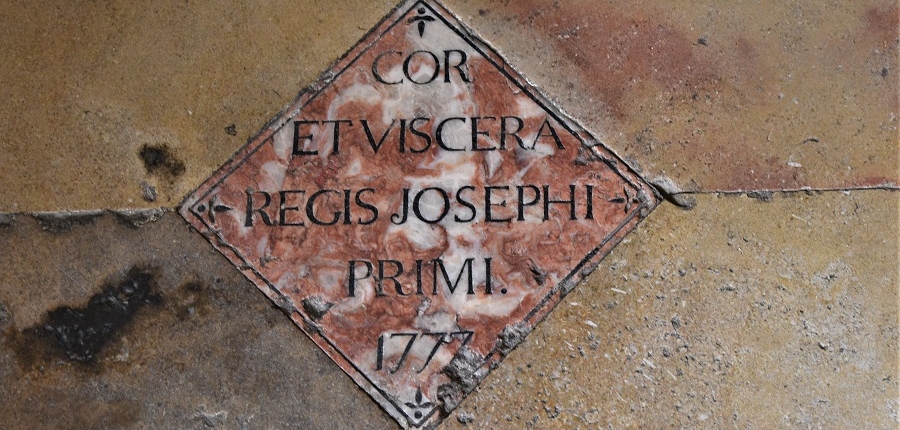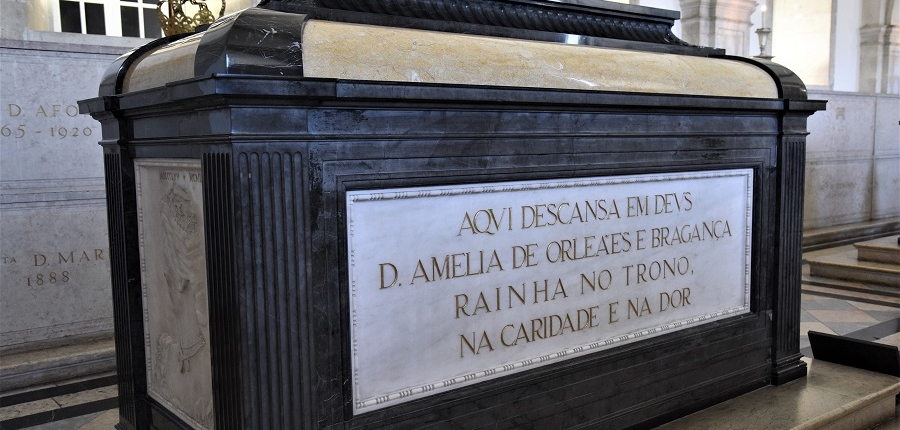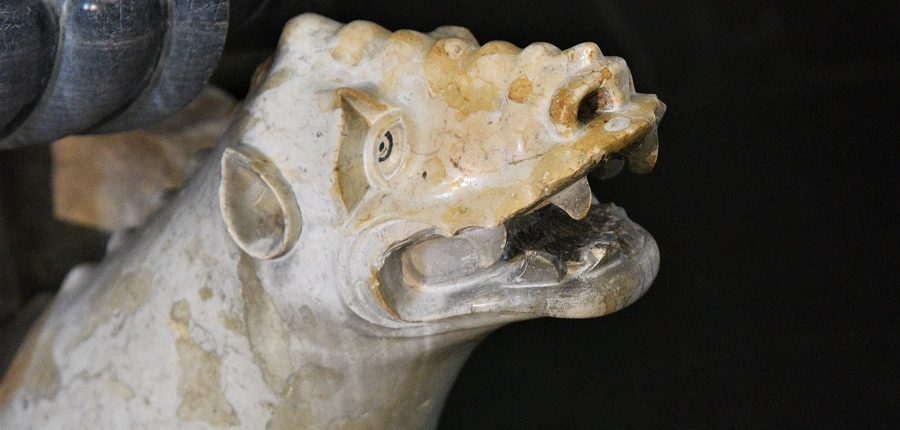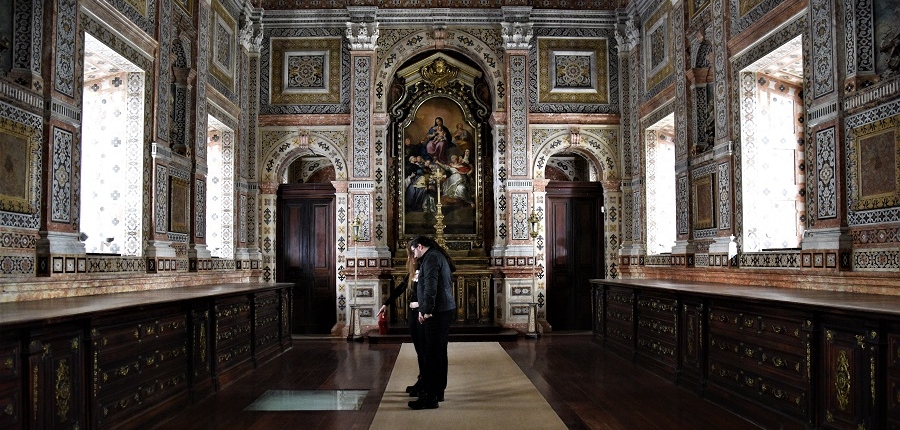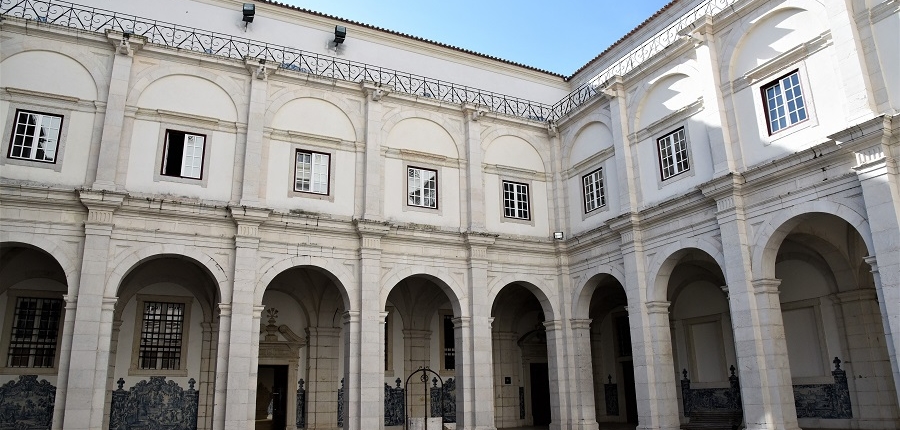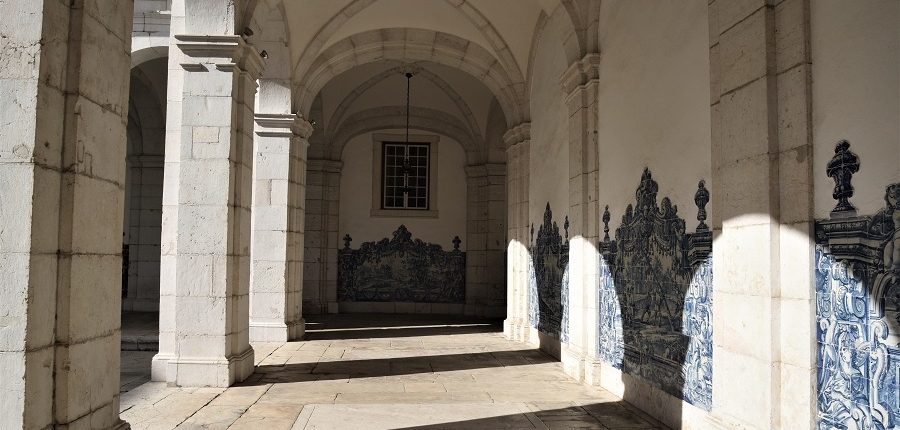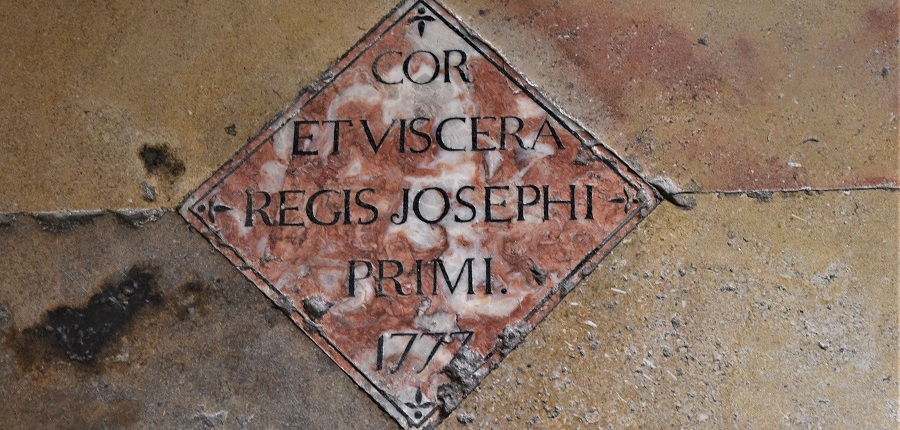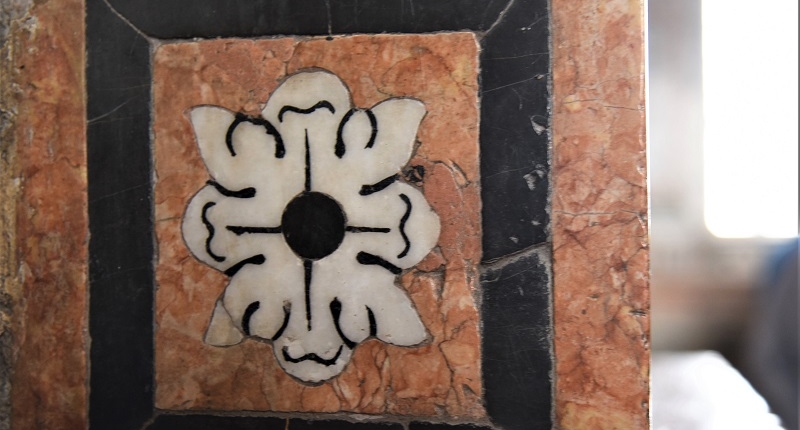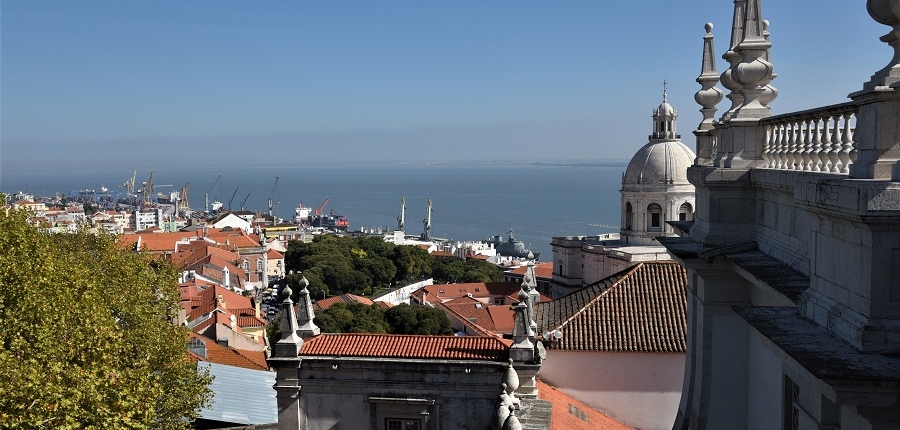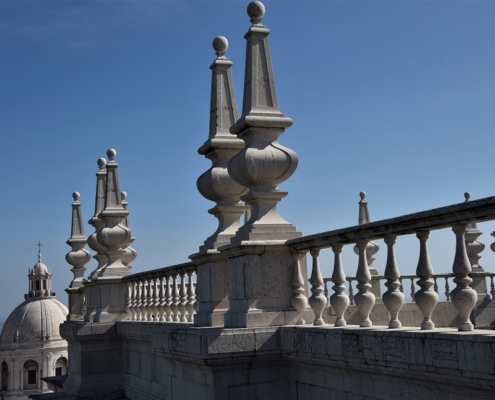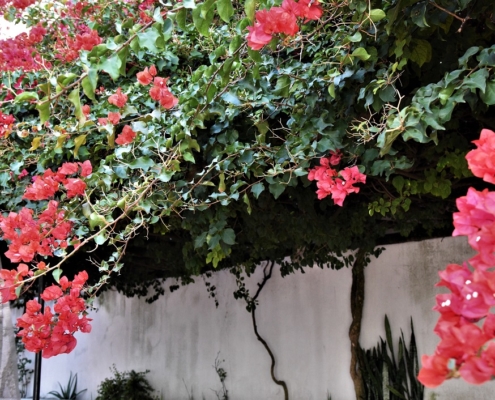St Vincent-hors-les murs. Majestic mausoleum
One of Lisbon’s most prestigious monuments
St Vincent’s outside the walls (São Vicente de fora) owes its name to its geographical position outside the perimeter of Lisbon in medieval times.
St Vincent’s, one of Lisbon’s most important monuments, was built by D. Afonso Henriques in 1147: the founding king had promised to build a church and a convent if he won the battle of reconquest against the Arabs, who then controlled a large part of Portugal.
With the help of Crusaders from several European countries, the king was victorious and kept his promise.
Today, the monument we visit has not much in common with the original building. The name Hors-les-murs is no longer appropriate. Above all, the monastery was completely rebuilt, first in 1527 by King D. João III. Then at the beginning of the reign of Filipe I, who gave St Vincent’s its current appearance: that of a Pantheon, a royal and religious mausoleum.
The old monastery offers themed guided tours. The one we are following here is entitled ‘Burials at São Vicente’. It takes you into rooms that are generally closed to the public.
As soon as you arrive in one of the cloisters, where the blue of the azulejos contrasts with the white of the stone, the first surprise comes from an engraving shown by the guide: it shows the primitive monastery, very different from the present one, of course. But this rare drawing also shows a cemetery: that of D. Henriques’ crusaders! We’re not quite sure, but we’ll find new references to this subject during the visit.
While the Romans buried their dead far from the city, the Christians gradually combined the two worlds. They went so far as to bury their dead in churches in order to place them under divine protection.
Myths and legends, rites and oddities punctuate the tour.
The first surprise is to be found inside the sacristy, richly decorated with marble marquetry. It contains an unexpected burial site that only visitors to ‘Burials in São Vicente’ can discover. The fragile floor of the sacristy does not allow too much trampling. Yet it is beneath our feet that this mystery is hidden.
We couldn’t say more without revealing the mystery.
Don’t miss the reliquary arch, which tells the story of the Moroccan martyrs. The tragic end of seven children aged between 12 and 17 who were part of the retinue of the young King D. Sebastião, at the famous battle of Alcacer Quibir. A fine work that helps us understand the importance of relics (usually corporeal) for churches.
St Vincent’s is a tomb, a pantheon.
The tombs of the kings and queens of the Bragança dynasty, until now kept in a small room, have been repatriated here. The rich mausoleums that adorn the hall dedicated to the royal dynasty are impressive.
Here you can admire the tomb of Amélie d’Orléans, where her marble bas-relief portrait, crowned with a starry crown, is curiously reminiscent of Princess Diana of England.
A mourner in the purest Romantic cemetery style is bent over the tomb of King Dom Carlos and his son. The sumptuous marble, the decorative crowns and the mysteries surrounding the royal family are all revealed.
A chapel in one of the cloisters contains a morbid statuary and its symbols: skulls, sickles and cypress branches to symbolise immortality. This chapel houses the two funerary monuments dedicated to the Children of Palhava (Meninos de Palhavã), the bastard sons of King D João V, who recognised them. They were therefore given a royal burial.
In addition to its macabre decor, the chapel contains the viscera of the Portuguese kings in its floor. The tradition of keeping the mortal remains of the world’s greats apart continued for a very long time. Embalmed, noble viscera were sometimes preserved very well.
This is how it was discovered that the king died under the effect of a poison, arsenic.
The terracotta floor tiles still bear witness to what they contain. And they add to the curious atmosphere that reigns in this curious chapel.
While the Patriarchs’ Hall is not of great architectural interest, it is impressive for the presence of the many sarcophagi of the patriarchs of the Portuguese church. The patriarchate ranks second only to the Pope in the Catholic Church. There are 5, including the one in Lisbon.
The real highlight of the visit, because it has a mysterious side, is behind a door near the entrance to the Pantheon. It is only opened for this visit. This is the ossuary. Among other things, the bones of the famous knights of Dom Henriques have been found here, probably transferred from the cemetery depicted in the engraving of the original monastery. However, researchers have not been able to prove this. It is also thought that the bones of the victims of the terrible earthquake of 1 November 1755 were piled up in this ossuary (Carneiro de São Vicente).
And beneath the pile of bones, archaeologists have made other discoveries. A torch can be used to catch a glimpse of them, sending a shiver down visitors’ spines.
As you follow the corridors of the imposing monastery and pass beneath the austere arches of its cloisters, the ‘Burials at São Vicente’ tour reveals the many legends and myths that punctuate the history of Portugal: that of the cursed dynasty, or that of the mysterious Knights of the Reconquest. We also learn why gold coins are found in tombs: the tradition dates back to ancient Egypt, where silver was placed on the eyes and forehead of the mummified deceased to pay for his passage to the afterlife…
Christians developed the cult of the lantern.
It is said that this tradition has its origins in the Celtic festival of ‘Sanhaim’: 1 November marks the beginning of hibernation. The passage between life and death is the narrowest: houses and tombs are lit so that the dead can visit the living. Mirrors are covered, fires are lit and candles are lit so that they don’t fear their own reflection!
At the end of the ‘Burials at St Vincent’s’ tour, visitors have free access to the other rooms of the monastery and can climb up to the terrace, which offers a magnificent 360-degree view of Lisbon.
The monastery has many other treasures, and themed tours are organised regularly, one Saturday a month at 11am. These tours cover a range of themes: architecture, art, azulejos, etc.
A supplement of two euros is added to the entrance fee. Reservations required:
Mosteiro de São Vicente de Fora
Largo de São Vicente
1100-572 Lisboa
Portugal
(+351)218885652
museu@patriarcado-lisboa.pt
https://www.patriarcado-lisboa.pt/site/index.php?cont_=47&tem=356

